For the product people who need to figure out leadership fast
For the product people who need to figure out leadership fast
Technical Excellence Got You the Role
Leadership Excellence Determines the Outcome
The gap between technical mastery and leadership capability is costing you sleep, team performance, and career momentum. Here's how to bridge it systematically.

I used to lie awake at 3 AM
mentally rehearsing stakeholder meetings
trying to solve team problems in my head.
I used to lie awake at 3 AM mentally rehearsing stakeholder meetings trying to solve team problems in my head.
Have you been there?
I'd gotten promoted into product leadership because I understood our users and could translate between technical and business teams. But nobody had taught me how to actually lead people or navigate the complex dynamics that come with that responsibility.
My days became an endless cycle of putting out fires.
And while I could see what was wrong, I didn't know how to fix it.
I started to understand why product people change jobs every 18-24 months.
It wasn't because the work wasn't rewarding. It was because the learning curve was so steep and the support so limited that people either burn out or get pushed out before they can really develop their leadership skills.
This wasn't sustainable, and I knew it
Every unresolved team conflict makes the next one harder to address. Every stakeholder misalignment creates more confusion downstream. Every strategic decision delayed becomes more urgent and politically charged.
The team starts second-guessing priorities, asking the same questions multiple times, or worse – stopping asking questions altogether and just waiting for direction. The collaborative energy that makes product work exciting gets replaced by hesitation and risk aversion.
Every unresolved team conflict makes the next one harder to address. Every stakeholder misalignment creates more confusion downstream. Every strategic decision delayed becomes more urgent and politically charged.
The team starts second-guessing priorities, asking the same questions multiple times, or worse – stopping asking questions altogether and just waiting for direction. The collaborative energy that makes product work exciting gets replaced by hesitation and risk aversion.
The pressure keeps mounting. With leaner teams and tighter budgets, every quarter matters more. Executives want to see clear progress and measurable results. Team members need confidence and direction. Stakeholders expect alignment and communication. And we're trying to deliver all of this while learning leadership on the job.
We're caught in a cycle where the problems compound faster than you can solve them. Without systematic approaches to leadership, each challenge becomes harder than the last. What starts as manageable growing pains evolves into team dysfunction, missed deadlines, and strategic confusion that takes months to untangle.
The pressure keeps mounting. With leaner teams and tighter budgets, every quarter matters more. Executives want to see clear progress and measurable results. Team members need confidence and direction. Stakeholders expect alignment and communication. And we're trying to deliver all of this while learning leadership on the job.
We're caught in a cycle where the problems compound faster than you can solve them. Without systematic approaches to leadership, each challenge becomes harder than the last. What starts as manageable growing pains evolves into team dysfunction, missed deadlines, and strategic confusion that takes months to untangle.
What you need isn't another product management framework or roadmapping tool.
You need the systematic leadership skills that nobody teaches but everyone expects you to have.
20+
Years of distilled experience
50
Modules across 9 chapters
100+
Curated resources
What you need isn't another product management framework or roadmapping tool.
You need the systematic leadership skills that nobody teaches but everyone expects you to have.
20+
Years of distilled experience
50
Modules across 9 chapters
100+
Curated resources

Leading Product Teams shows you how successful product leaders actually think
not just about features and metrics, but about team dynamics, stakeholder relationships, and strategic decision-making in complex, ambiguous situations.
Most importantly, you'll discover that leadership is a learnable system
There are predictable patterns to team conflicts and reliable approaches to resolving them. There are frameworks for difficult conversations that actually improve relationships. There are ways to measure progress that drive the right behaviors instead of creating chaos.
This is the systematic approach to developing leadership skills that eliminates the painful trial-and-error learning that keeps most product people stuck in firefighting mode
Instead of spending years figuring out what works through costly mistakes, you get the proven frameworks and practical guidance that create calm, productive, high-performing teams from day one.
This isn't just about becoming a better manager or hitting your OKRs.
When you master these leadership skills, you fundamentally change the trajectory of your career and the quality of your daily work life.
You get to become the leader people actually want to work for. Instead of watching talented team members update their LinkedIn profiles, you'll see them referring friends to open positions on your team. Instead of dreading difficult conversations, you'll handle them with confidence and watch relationships strengthen as a result.
Your work becomes energizing instead of exhausting. When you can close your laptop at 5 PM and not think about team problems until the next morning, when strategic decisions feel clear instead of overwhelming, when your team operates smoothly without constant intervention – that's when work becomes sustainable and genuinely rewarding.
But the deeper meaning goes beyond just your own experience. Every person on your team deserves to work under leadership that helps them grow, that provides clear direction, and that creates an environment where they can do their best work. When you develop these skills, you're not just advancing your own career – you're directly improving the professional lives of everyone who works with you.
In an industry where burnout is common and team dysfunction is normalized, becoming a truly effective leader is both rare and transformative. You become someone who creates calm in the chaos, who builds instead of just manages, who develops people instead of just directing them.
That's leadership that matters. That's success worth pursuing.
This isn't just about becoming a better manager or hitting your OKRs.
When you master these leadership skills, you fundamentally change the trajectory of your career and the quality of your daily work life.
You get to become the leader people actually want to work for. Instead of watching talented team members update their LinkedIn profiles, you'll see them referring friends to open positions on your team. Instead of dreading difficult conversations, you'll handle them with confidence and watch relationships strengthen as a result.
Your work becomes energizing instead of exhausting. When you can close your laptop at 5 PM and not think about team problems until the next morning, when strategic decisions feel clear instead of overwhelming, when your team operates smoothly without constant intervention – that's when work becomes sustainable and genuinely rewarding.
But the deeper meaning goes beyond just your own experience. Every person on your team deserves to work under leadership that helps them grow, that provides clear direction, and that creates an environment where they can do their best work. When you develop these skills, you're not just advancing your own career – you're directly improving the professional lives of everyone who works with you.
In an industry where burnout is common and team dysfunction is normalized, becoming a truly effective leader is both rare and transformative. You become someone who creates calm in the chaos, who builds instead of just manages, who develops people instead of just directing them.
That's leadership that matters. That's success worth pursuing.
Driving Growth, Amplifying Impact
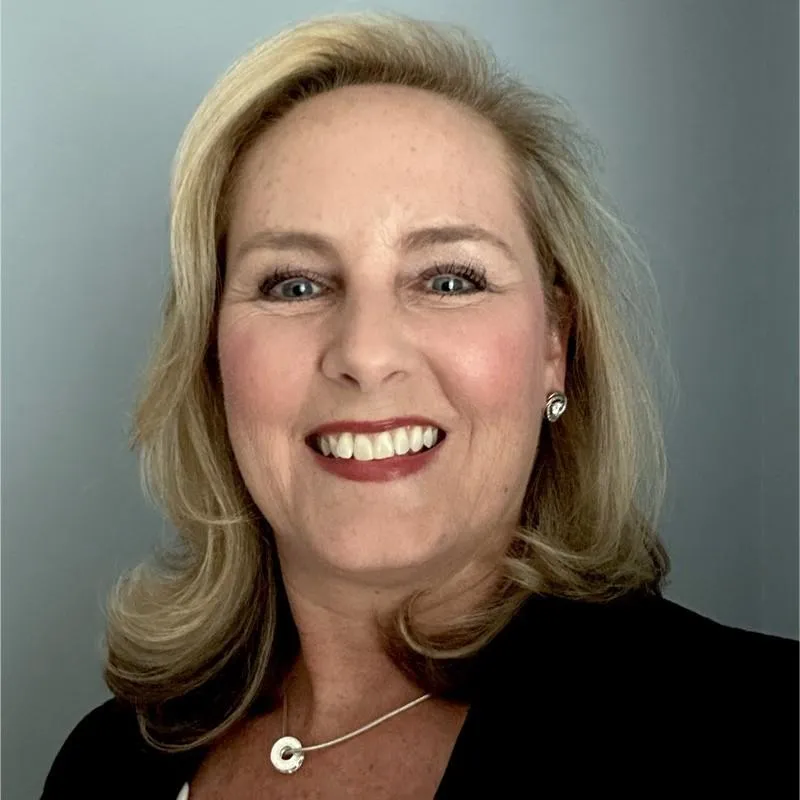
Jackie Witchko
Product, Program & Operations Leader
Matthew brings energy and enthusiasm into every room. His ability to apply his vast product and project management skills while garnering the support of the development teams that he manages is impressive! I am grateful for his mentorship and his contagious desire to never stop learning and becoming better in all things, professionally and personally.

Jennifer Richardson
Director of Product
Immediately after joining our team, Matthew's experience, knowledge, and value became apparent. He clearly articulated the "why" behind the project to which he was assigned, improved processes, and gained team buy-in.
Matthew is a strong leader, able to mentor and teach, and he has a breadth of experience and understanding across many industries and supporting companies at all stages of their journey.

David Fabie
AVP - Global Assignments and Culture
Matthew has that rare ability to see both the forest AND the trees. A gifted strategic thinker, an engaged people manager and a creative and innovative solutions architect.
Any organization that is fortunate enough to work with Matthew will be far better off for having done so.
Driving Growth, Amplifying Impact

Jackie Witchko
Product, Program & Operations Leader
Matthew brings energy and enthusiasm into every room. His ability to apply his vast product and project management skills while garnering the support of the development teams that he manages is impressive! I am grateful for his mentorship and his contagious desire to never stop learning and becoming better in all things, professionally and personally.

Jennifer Richardson
Director of Product
Immediately after joining our team, Matthew's experience, knowledge, and value became apparent. He clearly articulated the "why" behind the project to which he was assigned, improved processes, and gained team buy-in.
Matthew is a strong leader, able to mentor and teach, and he has a breadth of experience and understanding across many industries and supporting companies at all stages of their journey.

David Fabie
AVP - Global Assignments and Culture
Matthew has that rare ability to see both the forest AND the trees. A gifted strategic thinker, an engaged people manager and a creative and innovative solutions architect.
Any organization that is fortunate enough to work with Matthew will be far better off for having done so.
INTRODUCING
Leading Product Teams

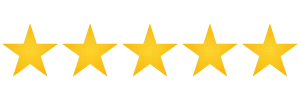
Here's what you get:
Masterclass available as video, podcast, and eBook
Choose-Your-Pace emails to help you progress
Reflection journal with prompts for every module
1 year of membership access to our community
Weekly private newsletter addressing questions and recent publications about product leadership
Weekly private podcast diving deep into course topics
Access to a private Obsidian site with research notes
Miro board templates and walkthroughs for strategy development, mission development, and more
Bonus conflict resolution self-assessment
Bonus daily, weekly, and monthly goal template for developing your cadence
Over 100 curated resources
Total value: $4297
Today Just $497
Here's What You'll Learn
Here's What You'll Learn
Vision and Mission
The first chapter dives into something that might seem basic on the surface but is actually foundational to everything we'll build together: vision and mission statements. I've worked with dozens of teams who thought they could skip this "fluffy stuff" and jump straight to execution - only to find themselves directionless a few months later. Let's make sure that doesn't happen to you!
After this chapter, you'll know:
The fundamental differences between vision and mission statements
How these statements influence day-to-day decision making
Why even small teams benefit from clarity in these areas
How to recognize effective versus ineffective statements
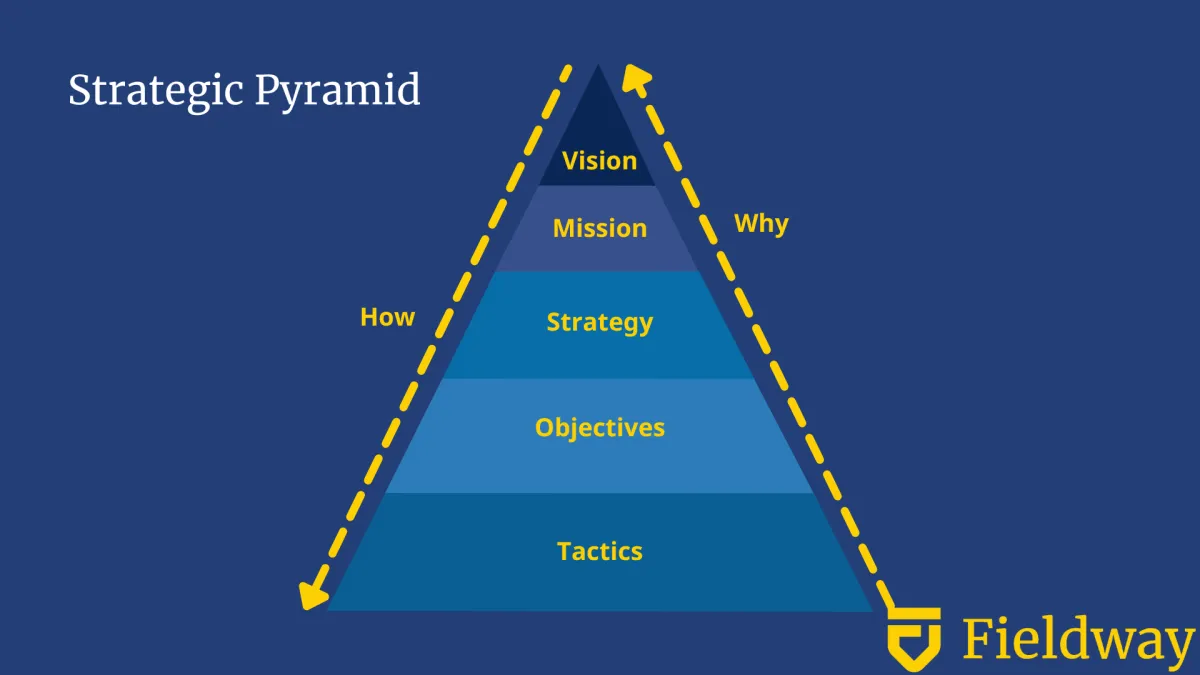
Strategy
How many times have you watched your team work incredibly hard but somehow miss the mark on what matters most? I've been there too. You've got talented people putting in long hours, but somehow the results don't match the effort. In my experience, this disconnect often comes down to one thing: strategy.
After this chapter, you'll know:
Why strategy is the critical bridge between vision and execution
How effective strategy directly impacts organizational success
What common strategy misconceptions prevent teams from achieving their goals

Objectives and Tactics
I remember when I first moved from strategy to execution in my early leadership days. It felt like stepping from the clouds down to solid ground. Suddenly, all those lofty ideas needed to become real things that real people would build. The transition wasn't always smooth, but it's where the magic happens!
After this chapter, you'll know:
Ask effective questions to validate assumptions
Facilitate productive feedback sessions across development stages
Write epics connecting strategy to execution
Create clear stories, tasks, and bugs
Estimate effort and forecast delivery timelines

Measuring Success
Have you ever achieved all your performance goals only to realize they didn't actually move the needle on what truly matters? I've been there. Years ago, my team hit every single one of our KPIs for three quarters straight. We were celebrating our success until our CEO asked a simple question: "So why hasn't customer satisfaction improved?" That question stopped us in our tracks and completely changed how I think about measuring success.
After this chapter, you'll know:
Why measuring success is fundamental to effective product leadership
How to approach measurement as more than just tracking numbers
The common pitfalls that make measurement systems ineffective
How to prepare for building a comprehensive measurement framework
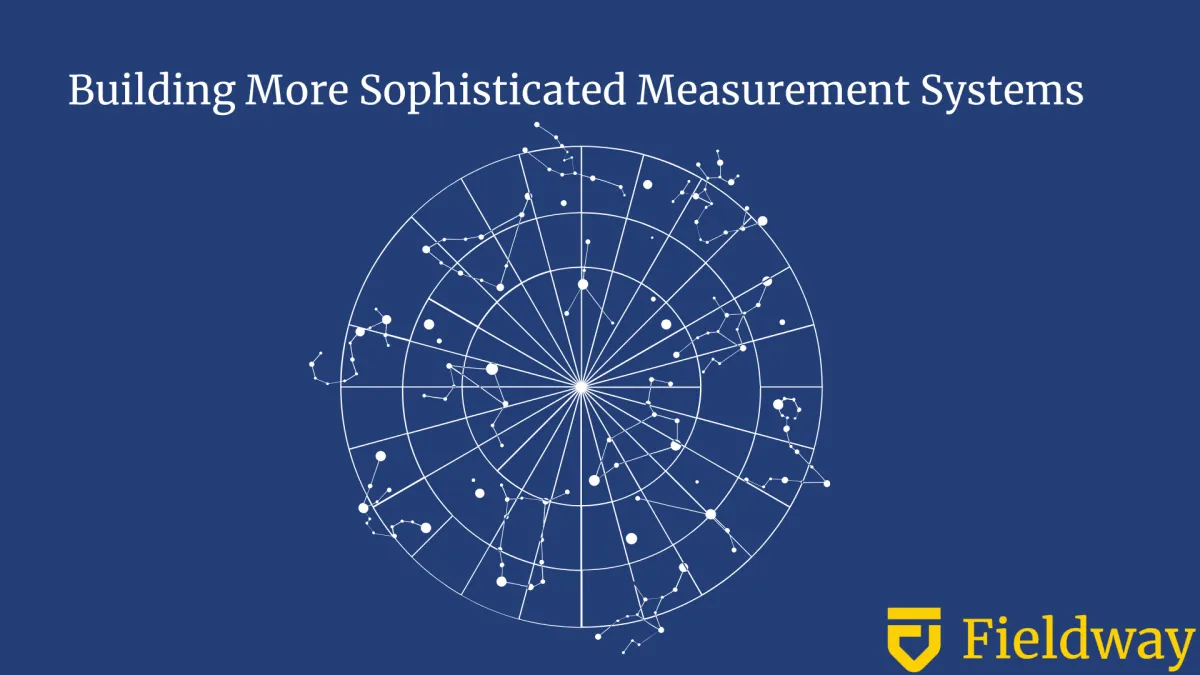
Systems Thinking
Have you ever fixed a problem in one area of your product only to watch two new issues pop up somewhere else? Or noticed how a small change in your team dynamic completely transformed your results? These aren't coincidences – they're examples of systems in action.
After this chapter, you'll know:
What systems thinking is and how it applies to product development
Why traditional linear thinking often fails in complex environments
How to recognize system characteristics like feedback loops and emergence
How systems thinking helps distinguish between systems problems and people problems
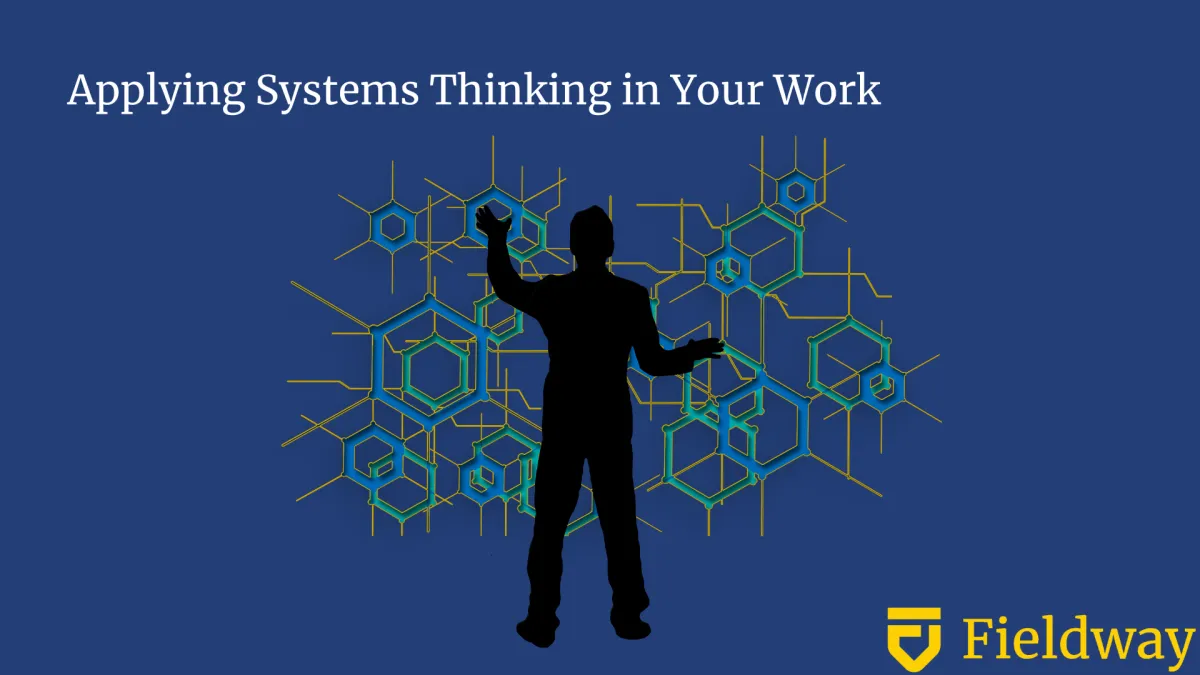
Resolving Conflicts
I've noticed something fascinating in my years of leadership: people don't quit jobs—they quit managers, or they quit to avoid conflict. In fact, some of the most talented people I've seen walk out the door weren't leaving because of the actual work or even their team. They left because of unresolved conflicts that made their daily experience miserable.
After this chapter, you'll know:
Why addressing conflicts is crucial for team performance and product success
The true costs of unresolved conflicts—financial, productivity-related, and psychological
How to distinguish between constructive and destructive conflict
Why conflict avoidance can be just as damaging as open hostility
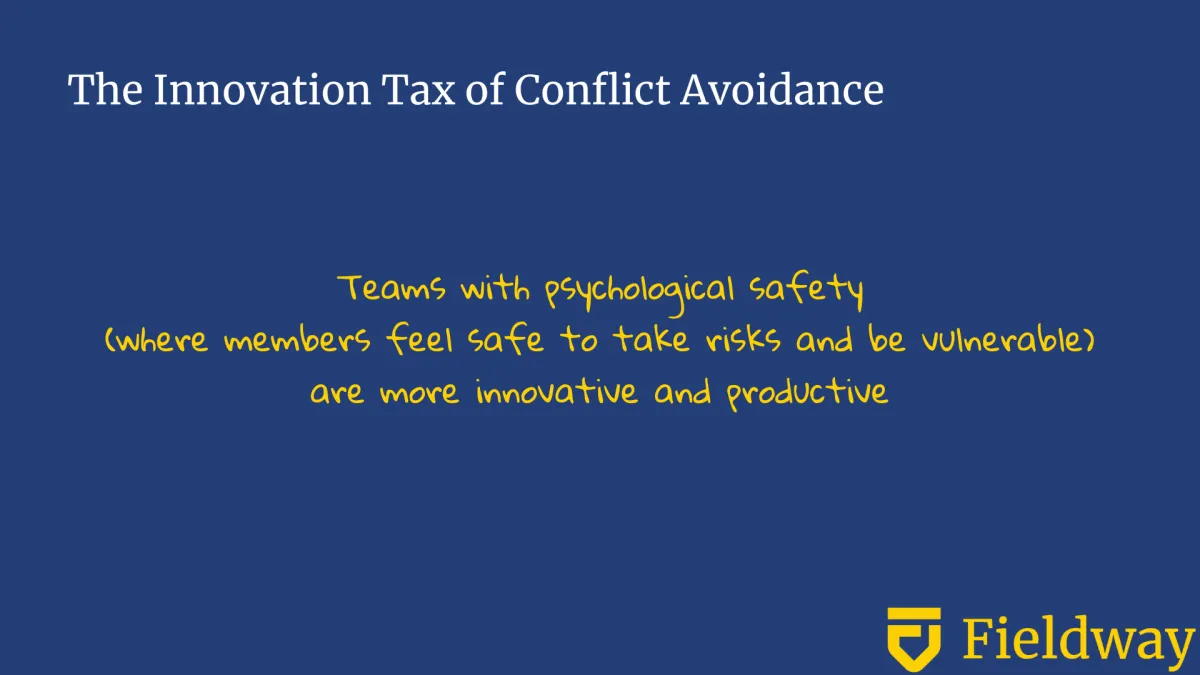
A Month in the Life
Throughout my career, I've seen brilliant strategies fail not because the ideas were bad, but because the team lacked the practical structure to execute effectively. You can have the best objectives, the clearest metrics, and the strongest team alignment, but without a reliable cadence to your work, it all falls apart in the face of daily chaos.
After this chapter, you'll know:
Why establishing a reliable work rhythm is fundamental to team success
How a well-structured month connects to the strategic concepts we've covered
How regular patterns create the foundation for continuous improvement
Practical and proven methods for leading meetings that produce value
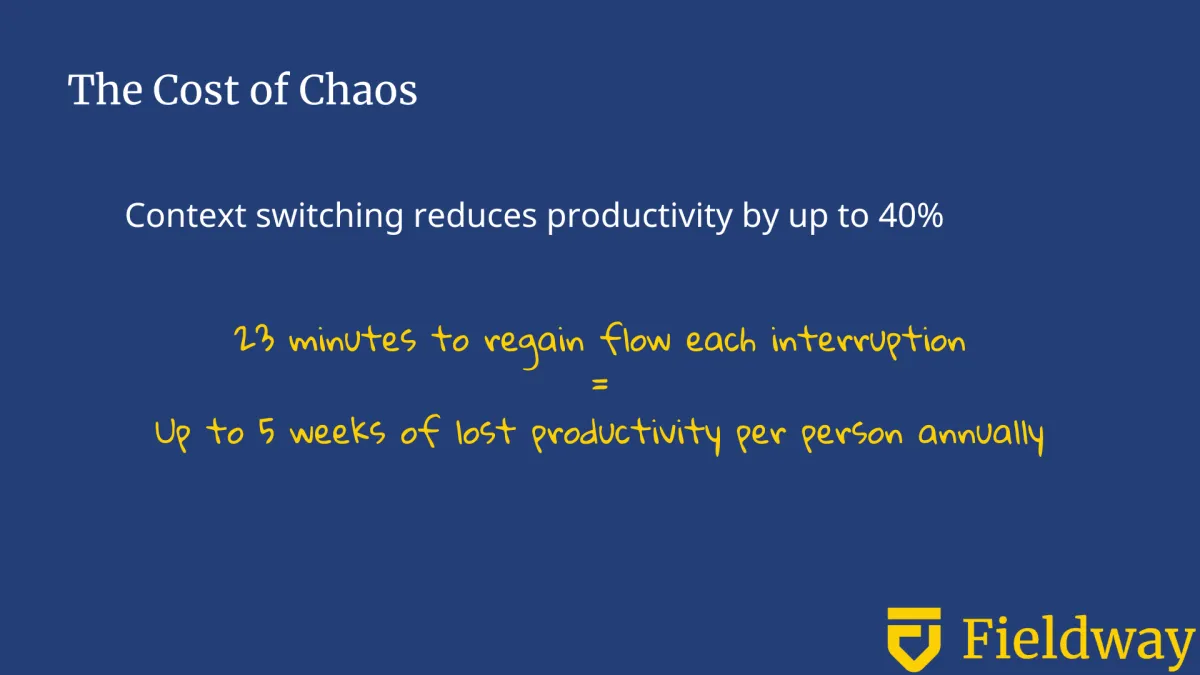
Who This Is Perfect For
VP of Product
Director of Product
Head of Product
VP of Engineering
Director of Engineering
Engineering Manager
Head of Design
Sr. Marketing Manager
Sr. Product Manager

"What sets Matthew apart is his Mr. Rogers-like demeanor. In moments when fires needed to be put out — and there were plenty — Matthew approached every challenge with a calm, measured and empathetic attitude. His ability to foster collaboration and create an atmosphere of trust and respect made even the most difficult tasks manageable and, dare I say, enjoyable.
Matthew is the kind of professional you want on your team when stakes are high and the path forward is uncertain. His technical and strategic excellence is matched only by his character, and I cannot recommend him highly enough."
- Nick Baker, Journalist
INTRODUCING
Leading Product Teams


Here's what you get:
Masterclass available as video, podcast, and eBook
Choose-Your-Pace emails to help you progress
Reflection journal with prompts for every module
1 year of membership access to our community
Weekly private newsletter addressing questions and recent publications about product leadership
Weekly private podcast diving deep into course topics
Access to a private Obsidian site with research notes
Miro board templates and walkthroughs for strategy development, mission development, and more
Bonus conflict resolution self-assessment
Bonus daily, weekly, and monthly goal template for developing your cadence
Over 100 curated resources
Total value: $4297
Today Just $497
Why This Works
(And Why You Can Trust It Will Work For You)

I don't make promises I can't keep. Over the past 20+ years, I've taught these exact concepts to multiple teams in-person, and the results have been remarkably consistent: teams double or triple their throughput within a year, leaders gain confidence in handling complex situations, and work-life balance actually becomes real instead of just a nice idea.
This isn't theory. Every framework, every approach, every system in this course has been tested in real product teams facing real challenges. I've watched quiet individual contributors transform into confident team leaders. I've seen dysfunctional teams become high-performing units that other departments want to emulate.
The principles are universal, but the application is specific. While I draw examples from product work, these leadership fundamentals work across industries and team structures. Whether you're leading engineers, designers, marketers, or cross-functional groups, the core challenges remain the same – and so do the solutions.
My commitment to you is simple: If you engage with this material seriously and apply what you learn consistently, you will see measurable improvements in your leadership effectiveness and your team's performance. I've never worked with a leader who applied these concepts faithfully and didn't see significant positive changes.
That's not confidence. That's experience.
Why This Works
(And Why You Can Trust It Will Work For You)

I don't make promises I can't keep. Over the past 20+ years, I've taught these exact concepts to multiple teams in-person, and the results have been remarkably consistent: teams double or triple their throughput within a year, leaders gain confidence in handling complex situations, and work-life balance actually becomes real instead of just a nice idea.
This isn't theory. Every framework, every approach, every system in this course has been tested in real product teams facing real challenges. I've watched quiet individual contributors transform into confident team leaders. I've seen dysfunctional teams become high-performing units that other departments want to emulate.
The principles are universal, but the application is specific. While I draw examples from product work, these leadership fundamentals work across industries and team structures. Whether you're leading engineers, designers, marketers, or cross-functional groups, the core challenges remain the same – and so do the solutions.
My commitment to you is simple: If you engage with this material seriously and apply what you learn consistently, you will see measurable improvements in your leadership effectiveness and your team's performance. I've never worked with a leader who applied these concepts faithfully and didn't see significant positive changes.
That's not confidence. That's experience.
Why Right Now Matters More Than Ever
Why Right Now Matters More Than Ever
You're living through an unprecedented moment in product leadership. With ongoing layoffs across tech, many middle managers are gone – but the leadership work they were doing didn't disappear with them. Someone still needs to align stakeholders, resolve team conflicts, and ensure projects actually deliver value.
That someone is probably you. Whether you volunteered or were voluntarily elected, you're now carrying leadership responsibilities that used to be distributed across more people. The stakes feel higher because they are higher. Your team is looking to you for stability and direction during a time when both feel scarce.
Here's what I've learned from working with teams during turbulent times: The leaders who step up confidently during uncertainty aren't just helping their teams survive – they're positioning themselves and their teams as indispensable. Organizations keep the people who make things work better, not just work harder.
Your team's performance right now is being watched more closely than ever. Teams that consistently deliver, communicate clearly, and maintain morale despite the chaos are the ones that survive restructuring. Teams that struggle with alignment, miss deadlines, or operate in constant firefighting mode become targets for the next round of cuts.
You have an opportunity that won't last forever. Right now, showing genuine leadership capability – the kind that makes teams more productive and stakeholders more confident – sets you apart in a field where many are just trying to keep their heads down. But this window won't stay open indefinitely.
Your team needs this stability now. They're anxious about the future, unsure about priorities, and looking to you for signals about whether things are going to be okay. When you can lead with calm confidence, when you can cut through the noise and create clarity, you're not just helping your career – you're providing something essential for their well-being.
The skills you develop now will compound for years. This challenging moment is actually the perfect time to build deep leadership competence. When you learn to lead effectively during uncertainty, leading during stable times feels almost easy.
STILL NOT SURE?
Frequently Asked Questions
Frequently Asked Questions
And if your question isn't here, grab my email or Telegram from the footer to contact me.
I barely have time for my current work – how can I fit this in?
The course is designed specifically for busy product leaders. You'll automatically receive pacing emails that guide you through the content, defaulting to one module per week (the "weekly" path). But you can switch to accelerated pacing anytime.
At the weekly pace, you're looking at around 30 minutes per week on average. Each module is intentionally dense with practical content, so you get maximum value for the time you invest. The structure is designed to help you absorb and retain the information rather than just consume it quickly.
My advice? Don't rush through this. The concepts need time to sink in, and you'll want to try applying them between modules. Think of it as investing 30 minutes a week to save yourself hours of firefighting, difficult conversations, and team dysfunction down the road.
Plus, since you get the content in multiple formats (video, eBook, and podcast), you can fit learning into whatever works for your schedule – listening during commutes, reading during lunch, or watching when you have focused time.
The goal isn't to add more to your plate – it's to give you the skills that make everything on your plate more manageable.
I'm not a manager or leader. Is this course for me?
It depends on your situation and interests. If you're not currently leading and have no interest in developing those skills, this course probably isn't for you. People who aren't engaged with leadership concepts – like developing vision, creating strategy, or guiding teams through complex decisions – tend to struggle with this material because they don't see the relevance.
But here's the thing: you don't need direct reports or a management title to be a leader. Many of the most effective leaders I know don't formally manage anyone. Instead, they're the people who step into the gap when decisions need to be made, who take ownership of ambiguous situations, and who others naturally turn to for guidance and direction.
If you find yourself in that position – if teammates look to you for answers, if you're making decisions that affect others' work, if you're the one translating between stakeholders and your team – then you're already leading, whether you have the title or not.
Taking this course doesn't mean you have to become a people manager or stop being an individual contributor. Many ICs are exceptional leaders who influence outcomes and guide teams without formal authority. This course will help you develop those informal leadership skills more systematically and confidently.
The question isn't whether you have a leadership title – it's whether you want to get better at the leadership work you're already doing.
What's the difference between the video, eBook, and podcast versions?
I designed this course to respect your time and learning preferences, so I started by writing detailed scripts and then recorded myself presenting that content on video with supporting slides.
The eBook is essentially the complete script I read during the videos, so you're getting virtually all the course content in text form. There are maybe 1-2 brief unscripted moments where I speak directly to the camera, but these are minor asides and the same concepts are covered elsewhere in the course. If you only read the eBook, you're still getting the complete learning experience.
The 750+ slides serve primarily as visual relief – so you're not just staring at me talking the entire time. Most are simple text or diagrams, and only about 29 of them made it into the eBook as figures.
The podcast version includes all the audio from the video lectures, but obviously without the visual elements. If you prefer listening, I recommend keeping the eBook handy for the occasional diagram or framework illustration. You can easily search the text for "fig." to locate and view any visuals you might want to reference.
All three formats are included with your purchase – you'll find links to the eBook and podcast feed in the introductory module of the main course. This way, you can switch between formats based on your schedule, location, or learning preference.
Same content, different ways to absorb it.
How quickly will I see results?
Based on my experience working with teams who apply these concepts, you can typically expect to see initial improvements within 6 months and significant gains within 12 months. I've consistently observed teams achieving 2-3x increases in throughput after their first year of implementing these approaches systematically.
That said, your timeline will depend on several factors: how quickly you work through the material, how consistently you apply what you learn, and your specific team dynamics and challenges. If it takes you a full year just to complete the course content, that will naturally extend your results timeline.
I want to be completely transparent here – as outlined in my terms and conditions, I can't and don't guarantee specific results. Your outcomes depend entirely on your engagement with the material and your commitment to applying these concepts in real situations.
What I can commit to is providing you with the proven frameworks, practical guidance, and ongoing support needed to develop these skills effectively. I'll do everything I can to help you succeed, including access to the community forum, weekly insights, and additional resources as they become available.
The teams that see the most dramatic improvements are those that engage deeply with the content and consistently practice applying these concepts with their real challenges. If that describes your approach, the results tend to speak for themselves.
Will this work for my specific industry/company size/team structure?
While I've framed this course around "leading product teams," the reality is that these leadership principles apply across virtually any industry, company size, or team structure. The fundamental challenges of leading people – navigating conflicts, aligning stakeholders, making strategic decisions, building productive teams – are remarkably consistent regardless of context.
I've worked with teams across an incredibly diverse range of environments: healthcare systems, health insurance companies, bicycle manufacturing, investment finance, national governments, military organizations, game development studios, higher education institutions, journalism outlets, marketing agencies, and many others. The same core leadership principles consistently apply because, ultimately, people are people everywhere.
Whether you're leading a 3-person startup team or a 30-person enterprise division, whether you're in B2B SaaS or physical manufacturing, whether you're in a highly regulated industry or a fast-moving consumer space – the human dynamics remain the same. Team members still need clear direction, stakeholders still have competing priorities, conflicts still need resolution, and strategic decisions still require systematic thinking.
The specific examples and case studies in the course draw from product and technology contexts because that's my background, but the frameworks for difficult conversations, the approaches to measuring value, and the systems for building team alignment work universally.
If you're leading people toward shared outcomes, this course will be relevant to your situation.
How is this different from other leadership courses?
Most leadership courses fall into one of two frustrating categories. They're either uselessly philosophical – full of misinterpreted theories with no practical guidance that actually works in real situations – or they're framework-heavy with endless charts, matrices, and spreadsheets that try to outsource the human work of leadership to tools and processes.
Leading Product Teams takes a completely different approach: roughly 20% foundational theory and 80% practical guidance that you can actually apply. You'll get both the hard skills (like measurement systems and strategic frameworks) and the soft skills (like conflict resolution and difficult conversations) that effective leaders need, grounded in real-world scenarios you'll recognize from your own experience.
This isn't about making you feel good with platitudes, overwhelming you with academic concepts, or pretending that the right spreadsheet can do your leading for you. It's about giving you the systematic skills and judgment needed to help you and your team actually succeed.
The other key difference is that this isn't just an isolated course. Through Fieldway, you have access to ongoing support – the community forum, weekly newsletter, deep-dive podcast episodes, and my research notes. Plus, if you want more personalized guidance, you can add asynchronous coaching through Fieldway Studio as part of a comprehensive leadership development package.
You're not just buying a course – you're joining a team dedicated to supporting your ongoing growth as a leader.
Can you guarantee I'll get a raise after finishing this course?
Unfortunately, no. As outlined in the terms and conditions, I can't guarantee salary increases, promotions, or any specific career outcomes, nor can I be held liable if those don't occur. Too many factors beyond the course content affect compensation decisions – company budgets, organizational changes, market conditions, and individual circumstances.
However, I can share my personal experience: when I began developing this course, I specifically focused on the skills and knowledge that I credit with increasing my own salary by approximately $40,000 in one year. These weren't abstract leadership concepts – they were the practical capabilities that made me more valuable to organizations and more confident in negotiations.
The skills you'll develop – like systematically improving team productivity, confidently navigating stakeholder conflicts, and creating measurable improvements in team performance – are exactly the competencies that organizations reward with increased compensation and advancement opportunities.
While I can't control your company's promotion timeline or budget constraints, I can help you develop the leadership capabilities that consistently lead to career growth. When you become someone who makes teams more productive, reduces organizational friction, and delivers reliable results, opportunities tend to follow.
The question isn't whether this course guarantees a raise – it's whether developing these leadership skills positions you for the career growth you're seeking.
What happens after my first year of access?
You keep lifetime access to the core course content – all 50 modules in video, eBook, and podcast formats – plus any new content I add to the course itself, even years down the road.
What changes after your first year is access to the ongoing support elements: the community forum, the weekly deep-dive podcast (which is separate new content, not the podcast version of the course), the leadership newsletter, and my research notes site. These are the "extras" that provide ongoing value beyond the core curriculum.
About a month before your one-year anniversary, I'll send you a few friendly reminders with the option to renew your membership to these ongoing resources. There's no automatic renewal – if you don't actively choose to continue, your access to these extras will simply lapse. No surprise charges, no hassle.
If you decide later that you want to rejoin the community or get back into the newsletter and podcast, you can always renew your membership at that time.
Important note: these ongoing support resources are only available through this course purchase. You can't buy access to the community, newsletter, or research site separately – they're designed specifically to support people who are working through this leadership development journey.
The core course content, though? That's yours forever.
What ongoing support do I get after completing the course?
Your ongoing support includes several valuable resources designed to extend your learning beyond the core course content.
During your first year, you get access to the private community forum where you can ask questions and connect with other product leaders, weekly deep-dive podcast episodes that expand on course topics with new insights and examples, a leadership newsletter with fresh observations and answers to community questions, and my personal research notes site with years of frameworks and resources I've collected.
Available anytime is the option to add asynchronous coaching through Fieldway Studio if you want more personalized guidance. This gives you direct access to work through your specific leadership challenges with tailored advice and support.
After your first year, the community, podcast, newsletter, and research site access expires, though you can renew if you choose. The core course content remains yours forever, and the option for asynchronous coaching is always available.
The goal is to provide multiple layers of support from peer learning in the community to ongoing insights through the newsletter and podcast, to personalized coaching when you need specific guidance for your unique situation.
You Don't Have to Figure This Out Alone
You Don't Have to Figure This Out Alone

If you've read this far, you already know something needs to change. Maybe it's the Sunday night anxiety about Monday's problems. Maybe it's watching your talented team struggle with unclear priorities and communication breakdowns. Maybe it's the growing realization that your technical expertise isn't enough to navigate the human complexities of leadership.
You're not the first person to feel this way, and you won't be the last. Every successful leader I know has stood exactly where you're standing now – capable, committed, but underprepared for the challenges that come with guiding other people's work and careers.
The difference between leaders who struggle and leaders who thrive isn't talent or luck. It's having the right frameworks, the right mindset, and the right support at the right time. It's understanding that leadership is a learnable skill, not an innate gift.
Leading Product Teams gives you everything I wish I'd had when I was first thrust into leadership: practical frameworks tested in real teams, systems thinking that addresses root causes instead of symptoms, and the confidence that comes from understanding how leadership actually works.
Your team is counting on you. Not to be perfect, but to be intentional. Not to have all the answers, but to know how to find them. Not to avoid difficult situations, but to navigate them with skill and care.
You already have what it takes. You just need the tools to unlock it.
Start building the leadership skills that will transform your team, your career, and your life.
Leading Product Teams


Here's what you get:
Masterclass available as video, podcast, and eBook
Choose-Your-Pace emails to help you progress
Reflection journal with prompts for every module
1 year of membership access to our community
Weekly private newsletter addressing questions and recent publications about product leadership
Weekly private podcast diving deep into course topics
Access to a private Obsidian site with research notes
Miro board templates and walkthroughs for strategy development, mission development, and more
Bonus conflict resolution self-assessment
Bonus daily, weekly, and monthly goal template for developing your cadence
Over 100 curated resources
Total value: $4297
Today Just $497
Real support for the real work of leadership
Sign up to get the private podcast in your inbox.
I agree to Fieldway's terms & conditions.
Find Your Way Forward
Find Your Way Forward
© 2025 Fieldway - All Rights Reserved
Springfield, Missouri, USA
Springfield, Missouri, USA
© 2025 Fieldway - All Rights Reserved
